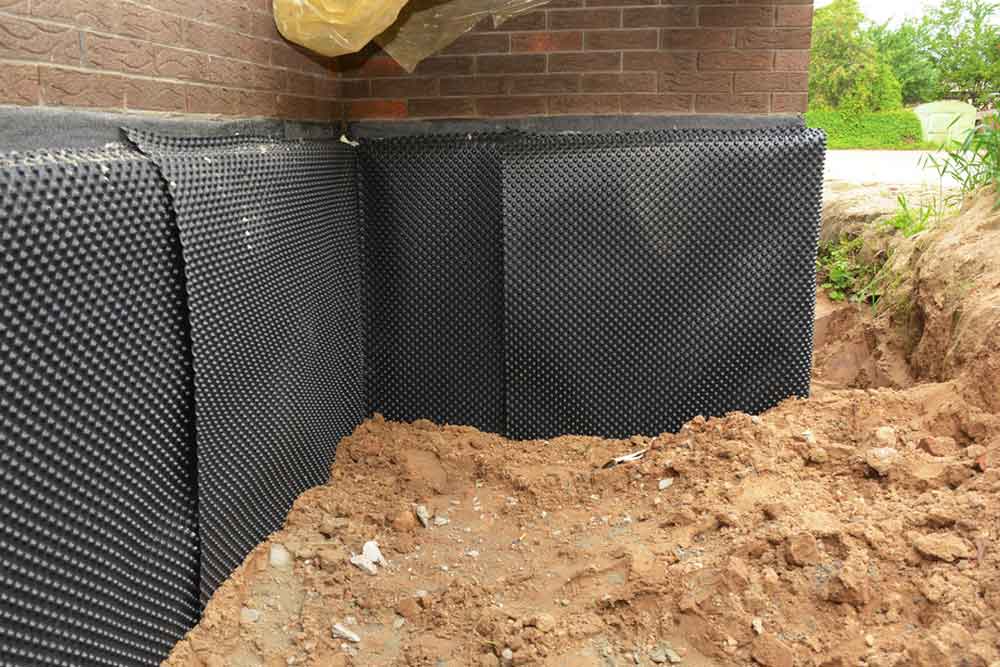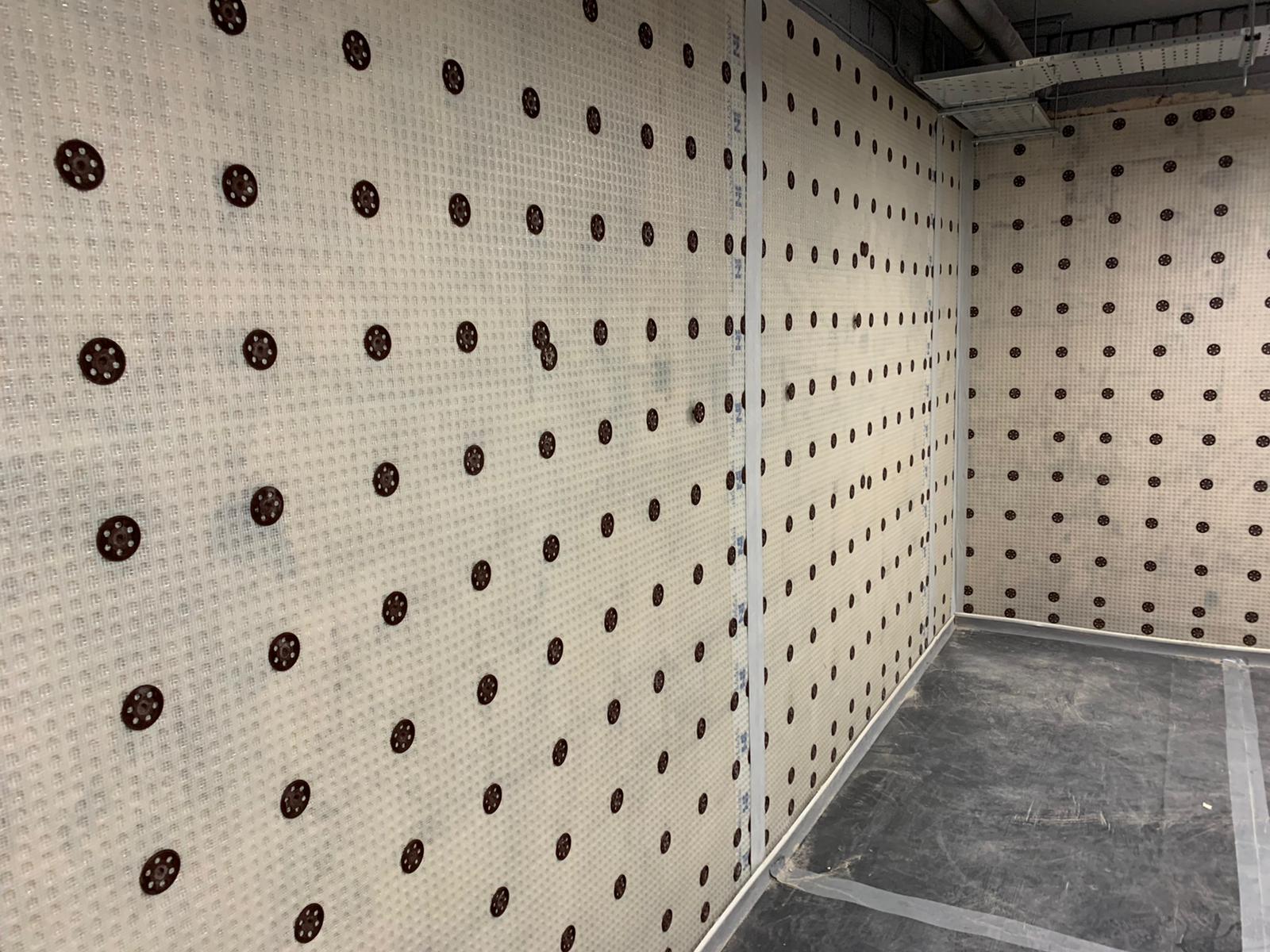How to tell condensation, rising, and penetrating damp with help from damp proofing newcastle
How to tell condensation, rising, and penetrating damp with help from damp proofing newcastle
Blog Article
Checking Out the Different Strategies and Solutions for Effective Damp Proofing
Dampness in buildings poses considerable obstacles to both structural integrity and interior air high quality. Numerous techniques and solutions have arised to battle this pervasive concern. From conventional damp-proof membrane layers to innovative chemical therapies, each method offers one-of-a-kind benefits. Recognizing these alternatives is important for reliable dampness control. However, picking the best remedy relies on details structure conditions and needs, triggering further exploration into the most effective moist proofing methods readily available.
Recognizing the Root Causes Of Dampness
Moisture can arise from different resources, comprehending these reasons is important for effective remediation. Frequently, wetness originates from three primary resources: increasing damp, penetrating wet, and condensation. Increasing moist happens when groundwater travels up via porous products, such as block or rock, commonly because of a lack of a reliable barrier (damp removal newcastle). Passing through wet is typically brought on by outside factors, consisting of roof covering leaks, faulty gutters, or harmed walls, allowing water to penetrate a building. Condensation, on the various other hand, arises from excess wetness airborne, usually intensified by bad air flow and temperature distinctions, causing water beads creating on surfaces. Recognizing these underlying problems is crucial, as each kind of moisture calls for a customized strategy for remediation. Proper analysis assists in identifying the most reliable services, inevitably safeguarding the structural stability of a structure and improving indoor air top quality
Conventional Damp-Proof Membranes

Chemical Damp-Proofing Solutions
Chemical damp-proofing services offer an innovative technique to stop dampness intrusion in structures. These techniques normally involve the application of fluid chemicals that penetrate stonework and develop a barrier against rising damp. Typically made use of chemicals consist of silanes, siloxanes, and various other water-repellent agents that react with surface materials to create a hydrophobic layer.The application procedure typically needs drilling holes right into the walls, infusing the chemical service, and enabling it to cure. This technique is specifically helpful for older structures where standard damp-proof membranes might be not practical. Additionally, chemical damp-proofing can be less disruptive and much more cost-efficient than extensive improvement projects.While reliable, these solutions rely on proper application and environmental problems for peak efficiency. Routine upkeep and monitoring are vital to guarantee the durability of the damp-proofing treatment. Overall, chemical damp-proofing represents a flexible option for protecting buildings against moisture-related damages
Tooth Cavity Wall Surface Building Methods
Tooth cavity wall building techniques supply many advantages, specifically in wetness control and energy performance. By including an air space between 2 layers of masonry, these wall surfaces properly minimize water ingress while enhancing insulation. This mix not only secures frameworks from wetness but additionally adds to reduced power usage.
Benefits of Dental Caries Walls
When considering effective moist proofing methods, the benefits of dental caries wall surfaces attract attention prominently. Cavity wall surfaces are composed of 2 separate layers, producing an air void that successfully minimizes dampness penetration. This layout lessens the risk of moisture, as the external wall surface functions as a barrier versus rainfall and water access. Furthermore, tooth cavity wall surfaces boost thermal insulation, which contributes to power effectiveness by lowering warm loss. They also give sound insulation, aiding to develop a quieter interior environment. The air gap allows for ventilation, which assists in dampness control and lowers the possibility of mold development. These advantages not only improve the total comfort of a structure yet likewise add to its durability and architectural integrity.
Wetness Control Techniques
Effective wetness control methods are vital in dental caries wall surface building to assure lasting protection versus moisture. One main technique includes the unification of weep holes, which assist in water drainage from the dental caries, avoiding buildup. In addition, using breathable membrane layers can help handle dampness degrees while allowing entraped vapor to escape. Appropriate placement of insulation is likewise essential, as it ought to not block drain courses. Guaranteeing that the external fallen leaves of the dental caries wall surface are constructed with waterproof materials improves general resilience. Normal upkeep checks are vital to identify any type of obstructions or damage early, guarding the structure's integrity. Inevitably, a mix of these techniques develops a durable defense versus wetness intrusion in cavity wall surfaces.
Insulation and Energy Effectiveness
Insulation plays a vital role in boosting energy performance within cavity wall surface building and construction. By integrating insulating products, these wall surfaces develop a thermal barrier that lessens warmth loss and reduces power usage. Efficient insulation not only assists keep a steady interior temperature yet additionally minimizes the danger of dampness, as it protects against condensation within the wall surface tooth cavity. Various strategies, such as the usage of rigid foam boards or mineral wool, can be utilized to attain excellent insulation efficiency. Furthermore, proper setup is important to guarantee that voids and gaps are reduced, which can otherwise compromise power effectiveness. Eventually, a well-insulated tooth cavity wall adds considerably to general sustainability and reduces home heating and cooling expenses for house owners.
Exterior Damp Proofing Approaches
Outside moist proofing techniques are vital for securing structures from wetness infiltration. 2 efficient strategies include the application of waterproof membrane layers and the setup of French drains. These solutions assist reduce water accumulation and protect the honesty of structures.
Waterproof Membrane Layer Application
While numerous methods exist for protecting against wetness access, the application of water resistant membranes continues to be a very efficient external wet proofing technique. These membranes are generally made from materials such as polyethylene, rubber, or customized asphalt, offering a robust barrier against water infiltration. The installation procedure includes applying the membrane layer to the exterior surfaces of structures or wall surfaces, guaranteeing total protection to avoid leakages. Correct adhesion and sealing at joints are important to optimizing efficiency. Water-proof membrane layers can be used in different forms, including fluid layers and sheet membranes, permitting flexibility based upon the particular needs of the framework. This technique not only safeguards structures from wetness yet likewise improves their longevity and structural stability.
French Drainpipe Installment
One efficient technique for managing groundwater and avoiding moisture buildup around a building's structure is the installation of a French drain. This drain system includes a trench loaded with crushed rock and a perforated pipe that redirects surface water away from the structure. Correct installation calls for cautious planning, ensuring that the drainpipe slopes far from the framework to help with excellent water flow. In addition, the place of the drain is vital; it must be positioned in locations vulnerable to pooling or excess dampness. Routine maintenance, consisting of cleaning particles from the gravel and ensuring the pipeline remains unhampered, is vital for long-term efficiency. Inevitably, a well-installed French drainpipe can substantially minimize the risk of water-related problems in cellars and foundations.
Interior Waterproofing Approaches
Inside waterproofing methods are important for securing a structure's inside from wetness infiltration and possible water damages. These methods generally include the application of specific products and methods created to create a dampness barrier within the structure. One common technique is making use of water-proof layers or sealants on walls and floorings, which avoid wetness from passing through surfaces.Additionally, mounting interior drainage systems, such as sump pumps, can successfully handle water buildup in cellars and creep spaces. Another method involves the usage of vapor obstacles, which are installed to hinder wetness movement from the ground into living spaces.Moreover, attending to any type of fractures or gaps in wall surfaces or structures with suitable sealers assures a comprehensive defense against water intrusion. By implementing these interior waterproofing strategies, residential property owners can greatly lower the threat of mold and mildew growth, structural damage, and various other moisture-related concerns. Correct execution of these methods is essential for long-lasting defense and building integrity.
Regular Upkeep and Examination Practices
Routine upkeep and evaluation methods are essential for ensuring the long-term performance of moist proofing options in any building. Routine checks enable homeowner to determine early signs of wetness breach, such as peeling off paint, mold development, and moldy odors. read more These signs can signal underlying problems that need instant attention.Inspections must be conducted at the very least annually, focusing on vulnerable areas like basements, creep areas, and outside wall surfaces. During these assessments, home owners should take a look at sealants, drainage systems, and ventilation to verify they work correctly.Additionally, preserving rain gutters and downspouts is essential, as clogged systems can cause water accumulation near the structure. Executing a normal maintenance timetable, in addition to timely repair work, can considerably extend the life expectancy of wet proofing actions and shield the architectural integrity of the structure. Aggressive procedures ultimately add to the overall wellness and safety and security of the living atmosphere.
Frequently Asked Inquiries
The Length Of Time Does Damp Proofing Commonly Last?
The duration of wet proofing effectiveness differs, typically lasting between 20 to half a century. Variables such as application quality, environmental problems, and upkeep methods greatly affect the long life of the moist proofing treatment.

Can I Damp Evidence My Home Myself?
The specific considered the feasibility of DIY damp proofing. With correct research and the best products, it is possible. Nonetheless, they also recognized the importance of professional guidance to assure resilient effectiveness and stop future problems.
What Are the Indicators of Inadequate Damp Proofing?
Indicators of inefficient wet proofing consist of persistent mildewy odors, noticeable mold and mildew growth, peeling off paint, wet spots on wall surfaces, and timber degeneration - damp proofing newcastle. Home owners need to deal with these issues without delay to stop additional damages and wellness problems
Does Damp Proofing Affect Indoor Air Quality?

Just How Much Does Professional Damp Proofing Price?
Expert moist proofing costs differ significantly, generally varying from $1,000 to $5,000 depending upon the property's size, the level of the damp problem, and selected techniques. Each scenario calls for a tailored analysis for accurate pricing. Frequently, moisture originates from three key resources: climbing wet, passing through wet, and condensation. When taking into consideration effective damp proofing approaches, the advantages of dental caries wall surfaces stand out plainly. External wet proofing methods are necessary for protecting frameworks from dampness seepage. While different techniques exist for stopping wetness access, the application of water resistant membranes stays an extremely effective external damp proofing technique. Indications of ineffective damp proofing include relentless mildewy odors, noticeable mold and mildew growth, peeling paint, moist patches on wall surfaces, and timber decay.
Report this page